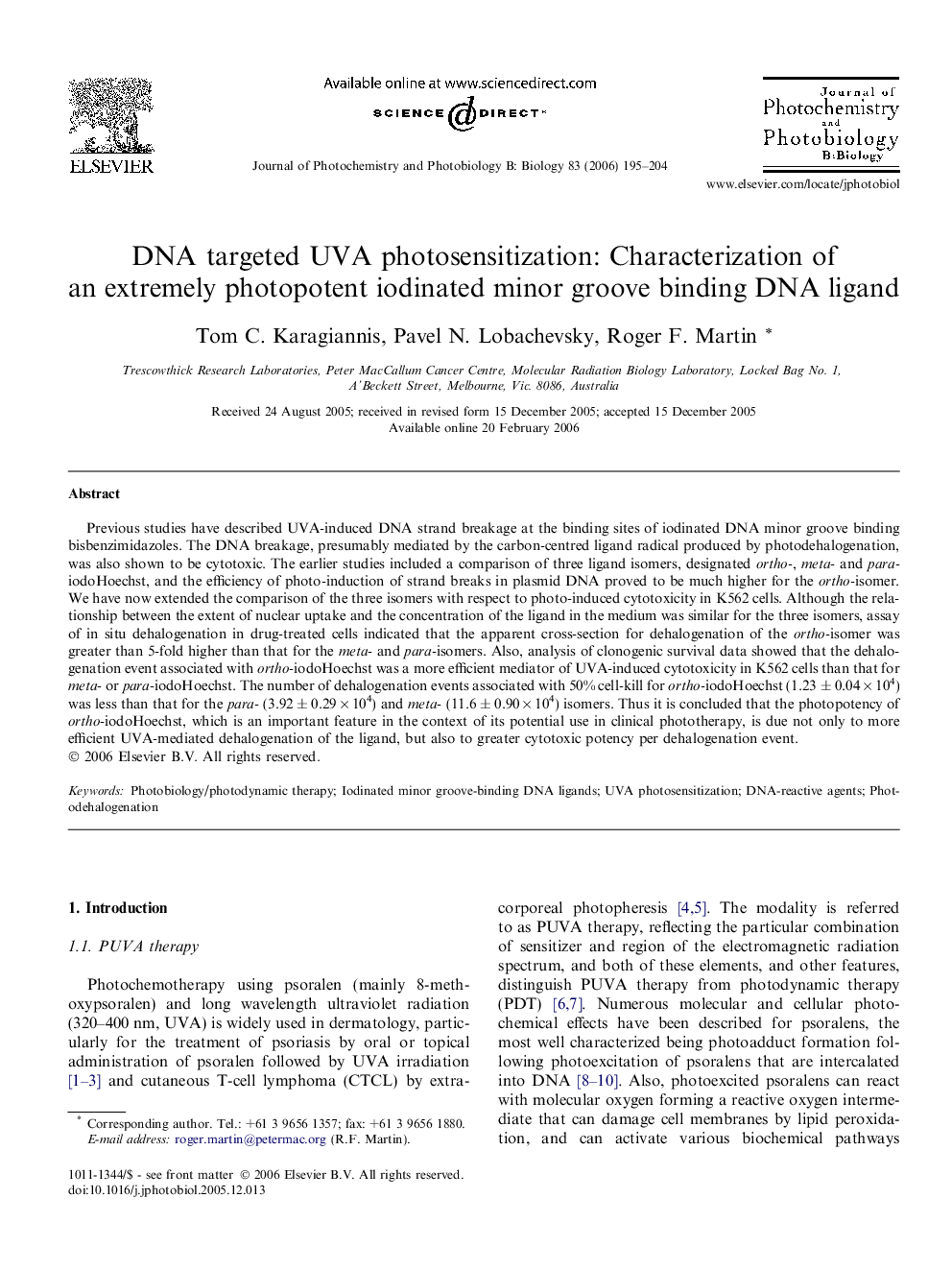| کد مقاله | کد نشریه | سال انتشار | مقاله انگلیسی | نسخه تمام متن |
|---|---|---|---|---|
| 30819 | 44506 | 2006 | 10 صفحه PDF | دانلود رایگان |

Previous studies have described UVA-induced DNA strand breakage at the binding sites of iodinated DNA minor groove binding bisbenzimidazoles. The DNA breakage, presumably mediated by the carbon-centred ligand radical produced by photodehalogenation, was also shown to be cytotoxic. The earlier studies included a comparison of three ligand isomers, designated ortho-, meta- and para-iodoHoechst, and the efficiency of photo-induction of strand breaks in plasmid DNA proved to be much higher for the ortho-isomer. We have now extended the comparison of the three isomers with respect to photo-induced cytotoxicity in K562 cells. Although the relationship between the extent of nuclear uptake and the concentration of the ligand in the medium was similar for the three isomers, assay of in situ dehalogenation in drug-treated cells indicated that the apparent cross-section for dehalogenation of the ortho-isomer was greater than 5-fold higher than that for the meta- and para-isomers. Also, analysis of clonogenic survival data showed that the dehalogenation event associated with ortho-iodoHoechst was a more efficient mediator of UVA-induced cytotoxicity in K562 cells than that for meta- or para-iodoHoechst. The number of dehalogenation events associated with 50% cell-kill for ortho-iodoHoechst (1.23 ± 0.04 × 104) was less than that for the para- (3.92 ± 0.29 × 104) and meta- (11.6 ± 0.90 × 104) isomers. Thus it is concluded that the photopotency of ortho-iodoHoechst, which is an important feature in the context of its potential use in clinical phototherapy, is due not only to more efficient UVA-mediated dehalogenation of the ligand, but also to greater cytotoxic potency per dehalogenation event.
Journal: Journal of Photochemistry and Photobiology B: Biology - Volume 83, Issue 3, 1 June 2006, Pages 195–204